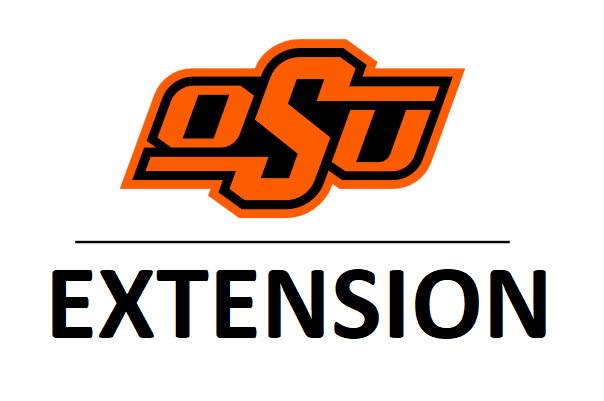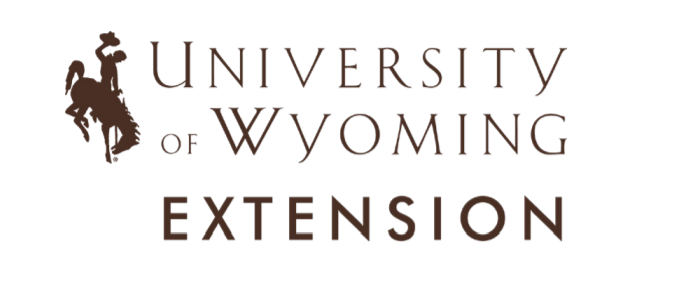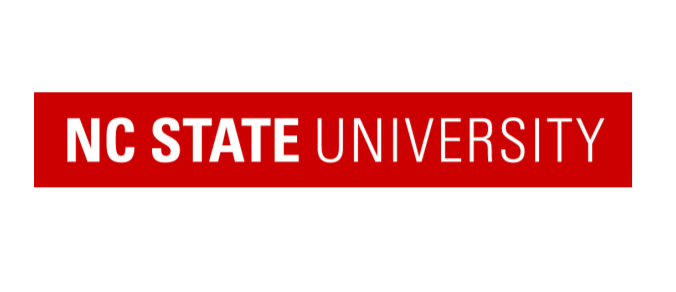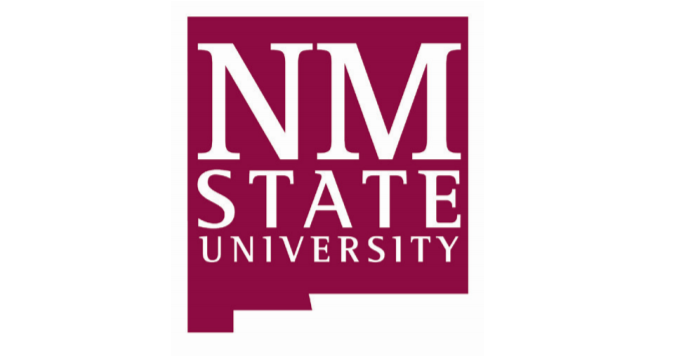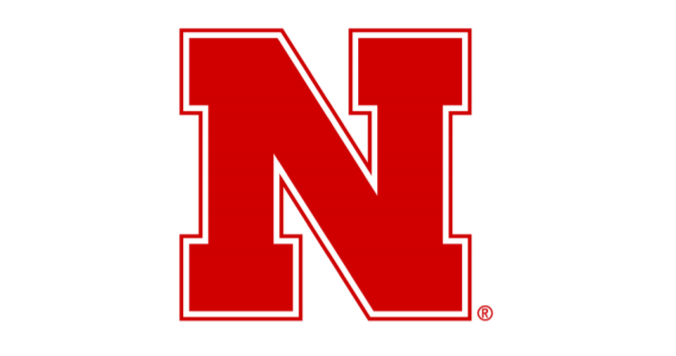Prescribed Fire: Understanding Liability, Laws and Risk
Prescribed fire is a land management practice used in many parts of the U.S. The prevalence of burning varies widely across regions due to cultural, ecological, climatic and legal factors. A primary concern among private landowners is the liability associated with prescribed fire activities, with questions frequently raised about risk and safety. Understanding local and state laws that address liability related to prescribed fire on private lands is essential. In this fact sheet, we define liability, risk and laws as they relate to prescribed burning as well as guidance on how risk can be minimized. This document does not constitute legal advice, but provides general information about liability and risk as it pertains to prescribed fire.
Liability concerns are often cited by landowners as a main reason they are reluctant to use prescribed fire. However, this concern is often based on exposure to misconceptions, poor information or perceptions that all fires are of the type often portrayed in the media as out-of-control wildfires that cause significant damages. These perceptions often are not based on actual information and inconsistent with the facts of prescribed fire use, law and liability. People who have experienced prescribed fire for any length of time quickly realize that not all fire is an extreme wildfire and fire behavior, good or bad, is a product of location, timing, fuels, weather and execution. Having a better understanding of prescribed fire liability and risk is an important step for landowners to overcome. By overcoming this, landowners can start to realize the benefits of using fire to meet their land management needs. There are steps that can be taken to reduce risk and manage liability when using prescribed fire, and in most states, the laws and local regulations can be favorable — not only for private land fire use, but also for limiting liability exposure when adhering to certain core principals of prescribed fire use.
Liability and Risk Defined
Liability means the legal responsibility for one’s acts or omissions. Failure of a person (e.g., landowner or burn boss) to meet those responsibilities leaves them vulnerable to the possibility of a lawsuit. For example, if a landowner conducts a prescribed burn on private land without a burn plan and it escapes the intended burn area and causes damage or injury to their neighbor. Because the state in which the burn occurred requires a burn plan, the landowner has a duty of care to their neighbor, which has been breached because of the landowner’s negligence. Therefore, the landowner is liable for damages or injuries to their neighbor, giving the neighbor the right to bring a lawsuit against the landowner. Having a written burn plan and adequate equipment on site can reduce or eliminate your liability, depending on the laws where the burn is conducted. Burning within the law reduces the burner’s liability and can provide limitations to the amount of liability to which a person conducting a burn is exposed.
Risk is defined as the likelihood of liability for or loss from exposure, to a potentially harmful action or event. Risk can be characterized in three ways: 1) probability of a loss, 2) degree of exposure to the loss and 3) magnitude of the possible loss. On a prescribed fire, for example, the probability, degree of exposure and magnitude of loss can vary widely from one burn to the next. Understanding the level of these risk characteristics for particular prescribed fire situations can help a landowner to better evaluate risk/benefit trade-offs.
Often, landowners believe that the probability of loss is extremely high (e.g., fire escaping or smoke over a road causing a vehicle accident), that just by setting the fire puts them at high potential loss exposure, and that the magnitude of that loss will be in the millions of dollars. This is called perceived risk, a risk that is indefinite and/or uncertain. An example of perceived risk is fear of getting bit by a shark, but the odds of that actually happening to beachgoers in the U.S. are 1 in 11,500,000. On the other hand, risk can be termed acceptable, which is defined as the level of potential losses that an individual, community or society will tolerate under existing conditions. The National Safety Council places the odds of dying in a vehicle crash at 1 in 114, which most people never think about when they get in an automobile and deem as an acceptable risk. In reality, which of these activities has the most risk--swimming at the beach, or driving to the beach? This is an example of perceived risk versus acceptable risk.
Prescribed Fire Laws
Every state has different laws and requirements regarding prescribed fire. Because of this variability, the liability associated with burning differs from one state to the next. To complicate matters, some states only have “fire” laws and do not specifically address prescribed fire. In these cases, interpretation for prescribed burners can be difficult and the need for legal interpretation may be required in some cases. It is beyond the scope of this publication to differentiate or explain specific state laws and requirements for conducting a prescribed burn, but rather to point out and remind burners to read and understand state laws or consult with someone who does before conducting a burn. It is important to note that there also can be specific local regulations where fire rules may differ within a county or municipality, (e.g., smoke or burn bans). In many cases, this information can be found on websites of your state agriculture, forestry or wildlife agencies.
There are three types of laws that address prescribed fire liability for both smoke impacts and damages from escaped fire across the U.S. They are: strict liability, simple negligence and gross negligence. Strict liability places the burden of restitution for damages from the fire on the burner regardless of any and all actions taken by the burner to avoid damages. There are only a few states that currently have some type of strict liability law in place. Simple negligence requires the complainant seeking legal action to prove damages and the proximate cause of the damages was negligence by the burner. This is the most common type of law, but still has many variations in the language from state to state. Gross negligence requires the complainant to show the damage resulted from the burner having a conscious and voluntary disregard for the need to use even reasonable care (i.e., lack of care that amounts to reckless disregard). In most states where gross negligence applies, there are typically statutorily prescribed fire standards and certification requirements that a burner must follow in order to receive the benefit of the lesser liability standard (gross negligence) and burning outside of those standards would result in the more stringent application of simple negligence.
Burn Records for Safety
To better understand risk from prescribed fire, one can look at prescribed burn incidents, a term generally applied to events on a prescribed fire that do not go according to plan and where damage or injury has occurred. General examples include property damage, vehicle accidents due to smoke or personal injury. Spotfires and escaped fires are examples of two specific types of fire behavior that can occur during a prescribed fire, which can lead to incidents, giving rise to liability concerns and increased risk. A spotfire is defined as an ignition occurring outside the planned burn area, but is extinguished by people and equipment on site. An escaped fire also is an ignition occurring outside the burn area, but cannot immediately be contained and requires outside assistance to extinguish. There has been very little data collected regarding spotfires and escaped fires, but what we do know is that escaped fires are very rare as are damage or liability claims resulting from escapes. As an example, a report from The Wildland Fire Lessons Learned Center (WFLLC) documented 133 escaped fires or a 0.8% escape rate for 16,626 prescribed burns conducted by federal agencies on nearly 2 million acres of public land in 2012 (Table 1).
A survey of prescribed burn association (PBA) members from the southern Great Plains found only 16 (1.5%) escapes out of 1,094 prescribed burns of almost 500,000 acres conducted from 1995 to 2012. The escapes ranged from less than 1 acre to 2,000 acres, but there were no insurance claims or lawsuits filed in response to any of these escapes by private landowners.
One prescribed burn contractor working in the southeastern U.S. reported conducting 2,000 burns on more than 350,000 acres during a 14-year period with no escapes, insurance claims or lawsuits. Testimony from experienced burners indicate similar stories of success with few incidents occurring, when burning is conducted appropriately. Another contractor working in Texas reported conducting 200 burns during a 10-year period on 150,000 acres with only two spotfires, no escapes and no insurance claims or lawsuits. In addition, two of the authors of this fact sheet have conducted more than 1,600 burns on more than 130,000 acres with only three escapes and no insurance claims or lawsuits.
Table 1. Number of escapes in relation to number of prescribed fires by entity. A total of 23,050 prescribed fires resulted in one insurance claim of less than $5,000 and no lawsuits.
| Entity | Number of Burns | Acres burned | Spotfires (Percent) | Escapes (Percent) | Claims/ Lawsuits | Reported Injuries |
|---|---|---|---|---|---|---|
| Federal Agency | 16,626 | ~2,000,000 | 0 | 133 (0.8%) | * | * |
| Prescribed Burn Association (1995-2012) | 1,094 | ~500,000 | 0 | 16 (1.5%) | 0 / 0 | 1 minor |
| Prescribed Burn Association (2015-2019) | 1,530 | 569,923 | 206 (13%) | 47 (3%) | Jan-00 | 0 |
| Contractor 1 | >2,000 | 350,000 | 0 | 0 | 0 / 0 | * |
| Contractor 2 | 200 | 150,000 | 2 (1%) | 0 | 0 / 0 | * |
| Fact Sheet Authors | 1,600 | 130,000 | * | 3 (0.02%) | 0 / 0 | 0 |
| Summary | 23,050 | 3,699,923 | 208 (1%) | 199 (1%) | Jan-00 | 1 |
*Not reported.
Safety stems from the appropriate application of fire within a state's law or accepted standards and should include having a plan or 'fire prescription' that ensures all aspects of safety are addressed prior to the fire. The safety record of prescribed fires cannot be overemphasized in the wake of tragic wildfires that taint the public’s perception that fire is unmanageable destruction.
To help dispel myths, the Oklahoma Prescribed Burn Association (OPBA) developed a web-based prescribed burn entry form (www.ok-pba.org) in 2015 and has encouraged prescribed burners across the country to enter annual burn information. The results reflect the truths of well-planned and executed prescribed fires.
From 2015 to 2019, 1,530 burns covering 569,923 acres were reported on the OPBA site from 16 states. There were 206 (13.5%) reported spotfires and 47 (3.1%) reported escaped fires. More than 87% of spotfires and 49% of all escapes reported on the website were small, burning less than one unplanned acre, and only two spotfires (0.009%) and six escaped fires (13.7%) were reported as burning more than 100 acres. Only one (<$5,000) insurance claim was reported and there were no lawsuits resulting from any of the 1,530 reported prescribed burns.
All of the information in Table 1 pooled together indicates that out of 23,050 prescribed burns, only 199 escaped fires were reported. This is a 99.1% rate for conducting prescribed fires with no escapes. We also have full records from 6,039 of these fires that were conducted on nearly 1.7 million acres without a single lawsuit being reported. From those same burns, there was only one minor insurance claim, resulting in 99.99% of the prescribed burns not having any insurance claims. All the reported and available numbers show that the landowners’ perceived risk of conducting prescribed burns is likely overestimated.
Risk of Injury and Fatality
Prescribed fire is often perceived as a very high-risk practice that could lead to possible injury or even death. However, in a study covering the period 1963-2013 that compared fatalities from fighting wildfire (201 fatal injuries) with conducting prescribed fires (6 fatal injuries), prescribed burn operations were found to be 3,350% less likely to have a fatal injury compared to wildfire suppression operations. The same study also compared fatalities within occupations involving crop production, animal production, logging workers, construction equipment operators and wildland firefighting per 100,000 full-time workers during 2006-2013 (Table 2).
Per 100,000 workers, logging workers had the highest fatality rate (97.3 per 100,000 workers), followed by crop production (28.8), animal production (15.6), construction equipment operators (12.1) and wildland firefighting (5.6). Many of these activities are associated with the everyday operation of a ranch or farm and have greater risk than firefighting, which is far more dangerous (3,350% greater) than conducting a prescribed burn. When considering these facts, the perceived risk of injury or death from prescribed fires may overestimate the actual risk, perhaps due to media and other exposure to dramatic fire. However, firefighting and prescribed fire application are proven to be lower-risk activities when compared to other agricultural occupations.\
Table 2. Worker fatalities by industry, 1963-2013.
| Industry | Fatalities per 100,000 workers |
|---|---|
| Logging | 97.3 |
| Crop production | 28.8 |
| Animal production | 15.6 |
| Construction equipment operators | 12.1 |
| Wildland firefighting | 5.6 |
| Ranch/farm | 3.3 |
A survey conducted with 27 private landowner-led prescribed burn associations throughout the Great Plains found that in a 20-year period, from 1995-2015, there was only one minor injury reported from nearly 1,200 burns on 500,000 acres (Table 1). The Oklahoma Prescribed Burn Association reported no injuries or fatalities from 2015-2019 on 1,530 reported prescribed burns collected from across the country. This information continues to show that even though prescribed fire is sometimes perceived as dangerous, this perception is contrary to the facts.
Insurance
A common question from landowners considering prescribed burning is “Will my current liability insurance cover me if my prescribed burn escapes and causes damages?” The answer is rarely simple. Remember, insurance is only important if someone is injured or something is damaged. Never assume an insurance policy provides prescribed burn coverage. It’s the policy holder’s responsibility to ask the questions needed to make good insurance decisions. In most cases, a landowner’s general farm and ranch liability policy will cover damages incurred from prescribed burning. If you do not know or there is any doubt, ask your insurance provider and get an answer in writing. Always mention the intention to conduct prescribed burns when applying for a new policy. Failure to disclose intent to burn may be considered falsifying the application.
Make sure that the limits of an insurance policy are understood. Check general farm and ranch policies to determine if activities are only covered if they are carried out on the insured’s own land or can be transferred to leased property. Coverage is most likely if: 1) burning is considered consistent with normal farming and ranching practices, 2) no laws or regulations are broken while conducting the burn and 3) the burn does not deviate from the written burn plan or normal burning practices. Another aspect to consider for additional protection is to increase the covered amount. Increasing liability coverage from $500,000 to $1 million is usually simple to obtain and normally for a minimal increase in yearly premiums. Consult with your provider for answers to specific questions about costs and coverage.
Insurance coverage specifically for prescribed burning is also available in some regions of the U.S. These policies can be added as an extended Forester’s policy or as a separate insurance policy specifically for prescribed burning. Most of these companies require, at a minimum, the policy holder be a certified prescribed burner within their respective state (in states that have certification programs) and provide proof of experience. Additional umbrella or excess liability policies may be available to provide coverage above the primary limits. Some companies offer options for stand-alone “per burn” policies for those landowners who do not burn often, or annual policies for those who do burn often, but do not fall under the category of a contractor. Some insurance companies provide discounts or other benefits to members of certain organizations.
The best protection from liability is to follow safe prescribed burning practices to avoid escapes that damage others’ property or create smoke issues. Having and following a burn plan can decrease potential liability as it shows due-diligence by following safe prescribed burning procedures. While there is no guarantee that this will eliminate liability, it can be used as evidence against accusations of negligence.
Prescribed fire insurance, combined with following state statutes, offer protection for burners from the liability risks associated with conducting prescribed burns. In addition to coverage associated with claims for things such as personal injury, property damage, medical expenses, or damage to rented premises, it would be very hard for a burner to be proven negligent for smoke or fire damages incurred from a prescribed burn if he/she had prescribed burn insurance and if the burn was conducted properly.
Care in planning and executing a burn are your best defense against lawsuits. Have insurance, but do your best to avoid having to use it. Finally, and most importantly, take the steps appropriate to ensure neighboring property owners are informed of your intentions. Good relationships, good communication, good cooperation, and respect are reflected intangibly in the data provided in this paper. Successful prescribed fire does not simply happen because there is a plan. Success is the result of a plan that places relationships, communication, cooperation, and respect at the core of the fire event. When this occurs, the data simply reflect the success that is possible and can help to dispel the fears, misperceptions and myths about using prescribed fire.
Recommendations for Reducing Risk
- Written burn plan. Have a written burn plan that address the parameters required or common to your state or local area while avoiding unnecessary complexity. Focus on intentions and outcomes more than specific tasks. For example, avoid creating an overly detailed checklist of timing, tasks, or crew, as a successful burn needs to allow for flexibility and innovation during the burn event. Consider having an experienced burner review your plan before ignition.
- Weather conditions. Show diligence in finding information about predicted weather conditions at the time of the burn as well as predictions after the burn (e.g., one to three days post burn). Print out the fire weather forecast at the time the decision was made to burn. Be sure to take on site weather before ignition.
- Communication. Maintain good relationships with those in your local area. Make sure all required permits are in place before burning. Let neighbors, fire departments and other required authorities know your intentions prior to burning.
- Contacts. Make sure to write down your contacts with neighbors, fire departments, or other authorities. Include date, time, and name of the individuals contacted.
- Smoke Impacts. Reduce or eliminate smoke on major roads and in nearby communities by utilizing dispersion conditions and wind directions that move smoke away from sensitive areas. Use roadway signs when burning near roads (consult local requirements or restrictions regarding signage) to alert motorists to nearby burning activity and potential smoke on the roadway. Consider nighttime weather predictions especially when burning where duff or heavy fuels may smolder for long durations.
- Contingency plan. Preplan in the event that unpredicted fire conditions occur, if the fire escapes or if smoke becomes an issue.
- Go-No Go checklist. Use to make sure all parts of the burn plan have been completed. This can include: firebreaks adequately prepared, weather and smoke dispersion parameters within prescription, all necessary equipment available and operating, everyone notified, and adequate crew members available.
- Prescribed burn association. Join or help start a local burn association in your area to increase access to equipment, labor and experience that will make burning safer.
- Documentation. Burn plans should be kept and stored until beyond the statute of limitations. Old burn plans can be used for evaluation purposes to determine if long-term management objectives are being met and make preparation for the next burn easier.
This document is provided for general information and educational purposes only, not to provide specific legal advice. The information provided does not constitute legal advice and should not be construed, interpreted or perceived as, but to assist with understanding liability and risk as it pertains to prescribed fire.
Referenced and additional information
Diaz, J, JE Fawcett, JR.Weir. 2016. The value of forming a prescribed burn association. SFE Fact Sheet 2016-2 Southern Fire Exchange. 3 p.
Dillinger, N, R Wilbur, T Righetti, JD Scasta. 2020. Wyoming prescribed burning regulations: A review of policy, guidelines, and case law for private lands. B-1354 University of Wyoming Extension, Laramie, WY 8 p. http://www.wyoextension.org/agpubs/pubs/B-1354-web.pdf
Evans, J, Gharis L (2013) Prescribed Fire Liability: Insurance options for landowners and consultants. Regional Readiness Cooperative, (North Carolina State University, Raleigh, NC, USA).
Haines, TK, Busby RL, Cleaves DA (2001) Prescribed burning in the south: trends, purpose and barriers. Southern Journal of Applied Forestry 25(4),149-153
Joshi, O, NC Poudyal, JR Weir, SD Fuhlendorf, TO Ochuodho. 2019. Determinants of perceived risk and liability concerns associated with prescribed burning in the United States. Journal of Environmental Management 230:379-385.
Kreuter UP, Woodward JB, Taylor CA, Teague WR (2008) Perceptions of Texas landowners regarding fire and its use. Rangeland Ecology and Management 61, 456-464
McCullers, S, 2013. A dangerous servant and a fearful master:why Florida’s prescribed fire statute should be amended. Florida Law Review 65:587.
National Safety Council. 2017. What are the odds of dying from…. Available at http://www.nsc.org/learn/safety-knowledge/Pages/injury-facts-chart.aspx. [Accessed 16 November 2017]
Toledo D, Kreuter UP, Sorice MG, Taylor Jr CA (2014) The role of prescribed burn associations in the application of prescribed fires in rangeland ecosystems. Journal of Environmental Management 132, 323-328.
Twidwell D, Rogers WE, Fuhlendorf SD, Wonkka CL, Engle DM, Weir JR, Kreuter UP, Taylor Jr CA (2013) The rising Great Plains fire campaign: Citizenry response to woody plant encroachment. Frontiers in Ecology & Environment 11 (Online Issue 1), e64–e71, doi:10.1890/130015
Twidwell D, Wonkka CL, Sindelar MT, Weir JR (2015) First Approximations of Prescribed Fire Risks Relative to Other Management Techniques Used on Private Lands. PLOS ONE 10(10):e0140410.
Toledo D, Kreuter UP, Sorice MG, Taylor Jr CA (2012) To burn or not to burn: Ecological restoration, liability concerns and the role of prescribed burning associations. Rangelands 34, 18-23.
Sun C (2006) State statutory reforms and retention of prescribed fire liability laws on U.S. forest land. Forest Policy and Economics 9, 392-402.
Weir, JR, UP Kreuter, CL Wonkka, D Twidwell, DA Stroman, M Russell, CA Taylor. 2019. Liability and Prescribed Fire: Perception and Reality. Rangeland Ecology and Management 72:533-538.
Weir, JR, RS Coffey, ML Russell, CE Baldwin, D Twidwell, D Cram, P Bauman, J Fawcett. 2017. Prescribed Burning: Spotfires and Escapes. NREM-2903 Cooperative Extension Service, Oklahoma State University, Stillwater, OK 8p.
Weir, JR, RS Coffey, CE Blocksome, ML Russell, D Twidwell. 2017. Prescribed Burn Equipment NREM-2899 Cooperative Extension Service, Oklahoma State University, Stillwater, OK 12p.
Weir, JR, D Twidwell, CL Wonkka. 2016. From grassroots to national alliance: the emerging trajectory for landowner prescribed burn associations. Rangelands 38(3):113-119. doi:10.1016/j.rala.2016.02.005
Weir JR, Twidwell D, Wonkka CL. 2015 Prescribed burn association activity, needs, and safety record: A survey of the Great Plains. (GPE Publication 2015-6).
Weir, JR, RL Stevens, TG Bidwell. 2015. Prescribed Burn Associations. NREM-2880 Cooperative Extension Service, Oklahoma State University, Stillwater, OK 4p.
Weir, JR, JD Scasta, R Stevens, TG Bidwell. 2013. Burn Plan for Prescribed Burning. NREM-2893 Oklahoma Cooperative Extension Service, Oklahoma State University, Stillwater, OK 20p.
Weir, JR, TG Bidwell, R Stevens, J Mustain. 2012. Firebreaks for Prescribed Burning. NREM-2890 Oklahoma Cooperative Extension Service, Oklahoma State University, Stillwater, OK 6p.
Weir JR (2009) Conducting prescribed fires: a comprehensive manual. (Texas A&M University Press, College Station, USA).
Weir, JR, JD Carlson. 2008. Smoke Management for Prescribed Burning. E-1008. Oklahoma Cooperative Extension Service, Oklahoma State University, Stillwater, OK 13 p.
Wildland Fire Lessons Learned Center (WFLLC) (2013) 2012 Escaped Prescribed Fire Review Summary: Lesson from escaped prescribed fires. Available at http://ncprescribedfirecouncil.org/pdfs/2012_Escaped_Prescribed_Fire_Review_Summary.pdf [Viewed on 1 March 2016].
Wonkka CL, Rogers WE, Kreuter UP (2015) Legal barriers to effective ecosystem management: exploring linkages between liability, regulations, and prescribed fire. Ecological Applications 25, 2382-2393
Yoder, J. 2008. Liability, regulation, and endogenous risk: the incidence and severity of escaped prescribed fires in the United States. Journal of Law and Economics 51:297–325.
Yoder, J, D Engle, and S Fuhlendorf. 2004. Liability, incentives, and prescribed fire for ecosystem management. Frontiers in Ecology and the Environment 2:361–366.December
Authors
John R Weir
Associate Extension Specialist, Natural Resource Ecology and Management, Oklahoma State University
Pete Bauman
Extension Range Field Specialist, Natural Resource Management, South Dakota State
University
Doug Cram
Extension Fire Specialist, Extension Animal Sciences and Natural Resources, New Mexico
State University
Jesse K Kreye
Assistant Research Professor, Ecosystem Science and Management, Penn State University
Carol Baldwin
Research Assistant Professor, Horticulture and Natural Resources, Kansas State University
Jennifer Fawcett
Extension Associate, Department of Forestry and Environmental Resources, North Carolina
State University
Morgan Treadwell
Extension Range Specialist, Ecosystem Science and Management, Texas A&M AgriLife Extension
Service
J. Derek Scasta
Rangeland Extension Specialist, Ecosystem Science and Management, University of Wyoming
Dirac Twidwell
Assistant Professor, Department of Agronomy and Horticulture, University of Nebraska-Lincoln
Cooperating agencies:
